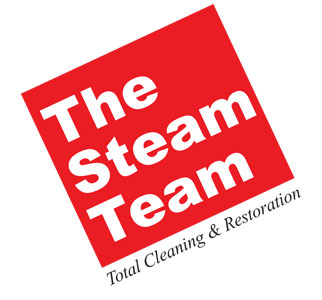Water damage is a common and often overwhelming issue that can impact homes and businesses in Austin, Texas.
/water damage service 9901 burnet road austin texas 78758
From unexpected storms and flooding to plumbing failures and appliance leaks, water intrusion can cause extensive damage to property, disrupt daily life, and pose health risks if not addressed promptly. This is where The Steam Team, a local business with over 42 years of experience, stands out as a trusted partner in water damage restoration and emergency services.
Founded in 1983, The Steam Team has built a reputation as Austin’s go-to solution for cleaning, restoration, and disaster recovery. Located at 9901 Burnet Road, Austin, Texas, 78758, they have been serving the community with unparalleled dedication and expertise. Their longevity in the industry is a testament to their commitment to excellence and their ability to adapt to evolving technologies and customer needs.
The Importance of Water Damage Restoration
Water damage restoration is a critical process that involves the removal of water, drying and dehumidifying the affected areas, cleaning and sanitizing, and restoring the property to its pre-damage condition. Left untreated, water damage can lead to structural deterioration, mold growth, and health hazards. For homeowners and business owners, quick action is essential to minimize the impact and prevent further issues.
The Steam Team understands the urgency of water damage emergencies. That’s why they offer 24/7 emergency services to ensure that help is just a phone call away, no matter the time or day. Their experienced technicians are trained to handle all types of water damage scenarios, from minor leaks to major flooding, with efficiency and professionalism.
Comprehensive Water Damage Restoration Services
The Steam Team provides a full range of water damage restoration services, tailored to meet the unique needs of each client. These services include:
Water Extraction: Using advanced equipment, The Steam Team quickly removes standing water to prevent further damage and speed up the drying process.
Drying and Dehumidification: High-powered air movers and dehumidifiers are deployed to eliminate moisture from the air and affected materials, ensuring thorough drying.
Mold Prevention and Remediation: Water damage often creates a breeding ground for mold. The Steam Team’s experts identify and remove mold to safeguard your health and property.
Structural Drying and Repairs: From drywall to flooring, their technicians address damage to structural components, restoring your property to its original condition.
Sanitization and Odor Removal: Contaminated water can leave behind harmful bacteria and unpleasant odors. The Steam Team ensures your space is clean, safe, and fresh.
State-of-the-Art Equipment and Techniques
One of the reasons The Steam Team remains a leader in water damage restoration is their investment in state-of-the-art equipment and techniques. Their advanced tools, such as moisture meters, infrared cameras, and industrial-grade dehumidifiers, allow them to detect hidden water damage and ensure a comprehensive restoration process. Combined with their skilled technicians, these tools make them a formidable force against water damage.
A Local Business with a Personal Touch
As a locally owned and operated business, The Steam Team takes pride in serving the Austin community. Their location at 9901 Burnet Road places them at the heart of the city, allowing for quick response times to emergencies. Over their 42 years in business, they have developed strong relationships with local residents and businesses, earning their trust through consistent quality and reliability.
The Steam Team’s local roots also mean they understand the unique challenges that Austin homeowners and business owners face. From heavy rains and flash floods to the occasional plumbing mishap, they’ve seen it all and have the experience to handle any situation.
Community Involvement
Beyond their professional services, The Steam Team is deeply committed to giving back to the Austin community. They actively support local charities, participate in community events, and contribute to disaster relief efforts. Their involvement reflects their dedication to making Austin not just a place they work, but a community they care about.
Why Choose The Steam Team?
There are many reasons why The Steam Team has been a trusted name in Austin for over four decades:
Experience: With 42 years of experience, they bring unparalleled knowledge and expertise to every job.
24/7 Availability: Emergencies don’t wait, and neither does The Steam Team. Their round-the-clock service ensures you’re never alone in a crisis.
Advanced Technology: Their use of cutting-edge equipment ensures efficient and effective restoration.
Certified Technicians: Their team is highly trained and certified, providing peace of mind that your property is in good hands.
Local Commitment: As a local business, they understand and prioritize the needs of the Austin community.
Comprehensive Services: From water extraction to complete restoration, they handle every step of the process.
Success Stories
Over the years, The Steam Team has helped countless Austin residents and businesses recover from water damage. Whether it’s a family whose home was flooded during a storm or a business that needed rapid restoration after a pipe burst, their team has consistently delivered exceptional results. Their satisfied customers often praise their quick response, professionalism, and attention to detail.
Looking Ahead
As The Steam Team celebrates over 42 years in business, they remain committed to evolving with the industry and continuing to provide top-notch services to the Austin community. Their dedication to innovation, customer satisfaction, and community involvement ensures that they will remain a trusted name in water damage restoration for years to come.
Water Damage
Water damage can be a devastating experience, but with The Steam Team by your side, you can rest assured that your property is in capable hands. Their extensive experience, advanced equipment, and unwavering commitment to the Austin community make them the go-to choice for water damage restoration and emergency services. Located at 9901 Burnet Road, Austin, Texas, 78758, they are ready to respond to your needs 24/7, bringing your property back to life and helping you move forward with confidence.

















